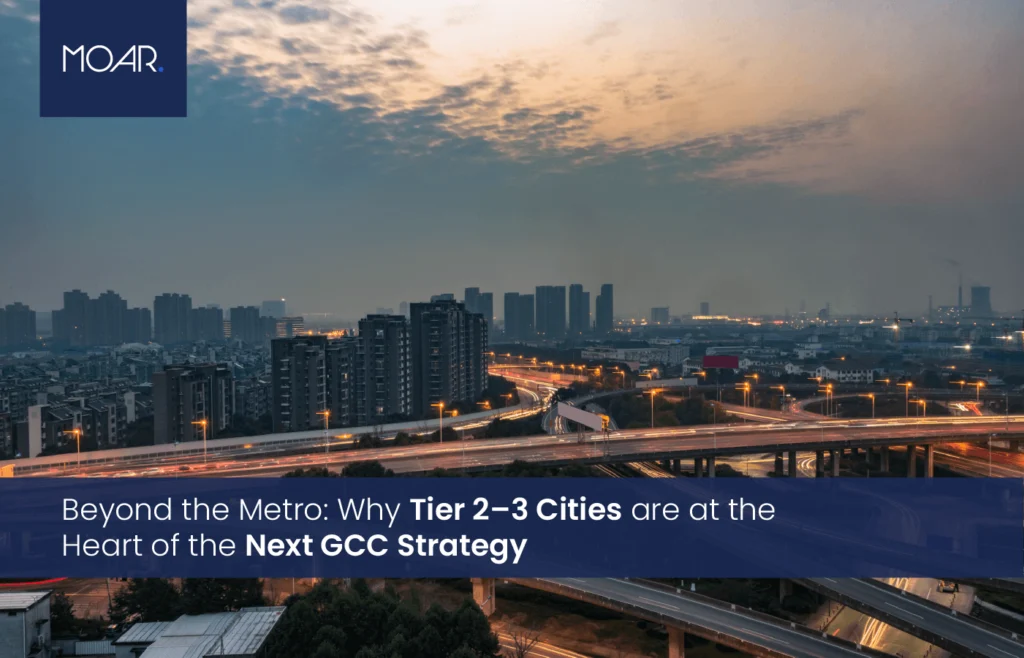
Bengaluru, NCR, Hyderabad, Pune. These cities have been the backbone of India’s global IT success story for two decades. They’ve delivered scale, talent, and efficiency to some of the world’s biggest enterprises.
But now, they’re stretched.
Office space is expensive. Commutes are brutal. And finding the right talent has become a game of speed and salary.
So, naturally, leadership teams are asking: What’s next?
More and more, the answer seems to be, look beyond the metro.
Not a Stopgap. A Shift That’s Here to Stay.
Cities like Coimbatore, Indore, Jaipur, and Nagpur aren’t just more cost-effective alternatives anymore. They’re starting to play a real role in how GCCs think about building for the future. More distributed, more stable, and yes, more scalable.
This isn’t about shifting some support work to a more cost-effective city. It’s about building GCCs that are deliberately designed to extend business capability without being constrained by geography or headcount pressure.
Why Now? Because the Ground has Shifted.
Let’s be clear: cost still matters. But it’s not the only reason.

Talent is Moving and Staying Local.
Around 15% of India’s tech workforce is already based in Tier 2–3 cities. And that number’s rising. What’s interesting is these professionals often want to stay put. They’re educated locally, more rooted, and show higher stickiness.
The Economics Still Work.
Yes, you still get 30–50% savings on infra. And salaries are 20–30% lower. But more importantly, that frees up investment for leadership, training, or digital maturity. Things that are harder to budget for in metros.
Infra and Policy are Catching Up.
Data centers. Coworking. Good internet. State support. It’s not perfect everywhere, but it’s improving fast and in some places, it’s more than enough to get started.
This Isn’t Decentralization. It’s Redesign.
The old model said: if you want quality and control, stay in a Tier 1 city.
But with AI, cloud-first tools, and increasingly modular teams, that assumption doesn’t hold anymore.
What if your next great capability center isn’t in Bengaluru or Gurugram at all but in a city where you can build deeper roots, stronger teams, and faster outcomes?
It’s not about being everywhere. It’s about choosing well and designing for impact from the start.
It Only Works If You Treat It Like Strategy.
The opportunity is real. But it’s easy to get it wrong.
Tier 2–3 expansion isn’t about copying what worked in a metro and pasting it elsewhere. It’s about rethinking what kind of work belongs where and how to build it right.
That means:
- Picking the right city for the right capabilities
- Designing a structure that aligns with your global model
- Embedding leadership, not just headcount
It’s not about moving out. It’s about building forward with purpose, in places built for what’s next.
Read more – Unlocking Tech Talent: A Strategic Imperative for Innovation and Competitive Advantage
